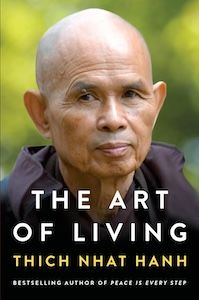|
I’ve been reading The Ritual Effect: From Habit to Ritual, Harness the Surprising Power of Everyday Actions by Michael Norton, so I’ve been thinking about my habits and rituals and what the difference is. According to Norton, a psychologist who teaches behavioral economics at Harvard Business School, “rituals are emotional catalysts that energize, inspire, and elevate us” and enable us “to savor the experiences of everyday life.” Rituals can be collective, as in religious, familial, or community practices, but they can also be individual, created by you to meet your unique set of needs, preferences, and desires. Think of it as a habit + fairy dust. Take a regular routine and make it special or sacred with the attention, intention, and attitude you bring to it. Rituals are a vibe, is what I’m saying. |
|
Some of the rituals in my life were obvious as soon as I asked myself the question. My morning meditation-journaling-coffee routine and frequent evening bubble baths are definitely rituals. And there are smaller, subtler ones, too. The song my community chorus sings to close each rehearsal is a corny and surprisingly touching ritual. The phrase my best friend’s kids use to say goodbye any time we part. The movie I watch every year on my birthday. There’s nothing inherently sacred about any of these things—largely by design, as it’s been decades since I was a religious person—but they feel that way because I’ve imbued them with meaning. Rituals feel good. They connect us to each other and ourselves. They make us happy. Michael Norton has the data to prove it. If savoring the experience of everyday life sounds appealing, I heartily recommend The Ritual Effect. Here are some other terrific reads to explore. |
Transform the daily grind of chores, parenting, exercise, etc. into powerful opportunities for connection and reflection with The Power of Ritual by Casper ter Kuile. Bring play back to your day with The Fun Habit by Mike Rucker, PhD, who I’m sure won’t mind that we’re promoting his strategies to the level of ritual.

For a more overtly spiritual approach, pick up The Art of Living by Thich Nhat Hanh. If anyone can convince me that doing the dishes can be a form of meditation, it’s him. Tish Harrison Warren’s Liturgy of the Ordinary (what a great title!) suggests practices that connect to elements of traditional Christian worship services and offers tools for both individual and group application. For a metaphysical spin, look at Jessica Dore’s Tarot for Change, which is informed by her study of psychology and mythology, or Basic Witches by Jess Zimmerman and Jaya Saxena, described by a colleague as “‘how to life’ with a witchy twist.” |
You could design a whole year’s worth of rituals around Enchantment by Katherine May, in which she recounts a post-pandemic year spent trying to rekindle her sense of wonder and presence by spending time in nature. Go even more granular with the daily tips in Romanticize Your Life.

Robin Wall Kimmerer’s Braiding Sweetgrass, which should be required reading for life, isn’t a how-to, but it contains beautiful descriptions of Native American rituals for connecting to and celebrating the natural world. In Rooted, Lyanda Lynn Haupt explores the scientific data about humans’ interconnectedness to each other and all of nature. You’ll never look at your garden or your walk in the woods the same after reading these. Wanna use your garden IN your rituals? Get Held by the Land by Leigh Joseph or The Art and Practice of Spiritual Herbalism by Karen M. Rose. And if thinking about having to do one more self-care-flavored thing is making you exhausted? Well, doing nothing can be sacred, too, and no one captures that better than Tricia Hersey in Rest is Resistance. |
The comments section is moderated according to our community guidelines. Please check them out so we can maintain a safe and supportive community of readers!
Source : Elevate Your Everyday









